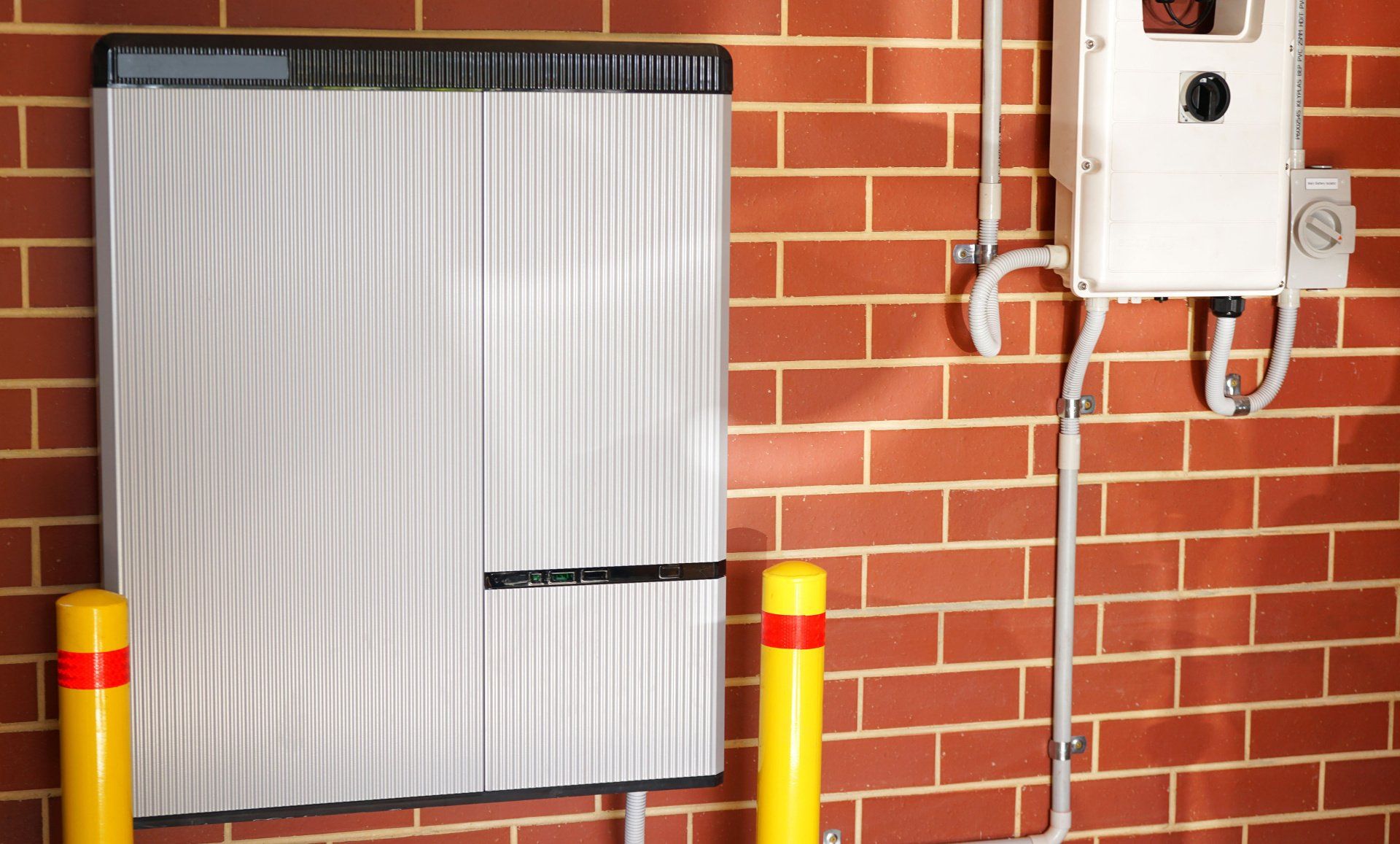Call Now! (260) 222-8220
Blog

By Adam Petersen
•
02 Dec, 2022
You might have heard that the federal government (and some state governments) offer tax credits for homeowners who install solar systems in their homes. What exactly is a tax credit? A tax credit reduces your income tax burden dollar for dollar. For example, if you claim a $1,500 tax credit, the amount you owe is commensurately reduced by $1,500. The federal government exacted the Investment Tax Credit (now referred to as the Residential Clean Energy Credit), in 2006. According to Forbes , since then, the U.S. solar industry has grown by more than 10,000% with an average annual growth of 50% over the last 10 years. Depending on when you installed or will install your solar PV system, the credits vary. The good news? For the next ten years, they’ve returned to the prior high of 30%. FEDERAL RESIDENTIAL SOLAR ENERGY TAX CREDITS The federal residential solar energy tax credits can be claimed on your federal income taxes for a percentage of the cost of your solar PV system, as long as they’re claimed the year they were completed. The exact percentages are as follows: For systems installed in 2020 & 2021, you are eligible for a 26% federal tax credit. In August of this year, Congress passed an extension of the investment tax credit (now referred to as the Residential Clean Energy Credit), and raised it to 30% for installations between 2022 – 2032! For systems in 2019 and prior it was 30%. For systems installed in 2033, it will decrease to 26% In 2034, it will further decrease to 22%. It expires in 2035 unless it’s renewed by Congress. And, the best news? There is no maximum that can be claimed. Eligibility requirements How do I get this federal income tax credit for my solar system and start saving? As with most things, there are certain requirements you must fulfill to be eligible. For most people they include: Your solar PV system must have been installed by 2034. It is at your residence. You own the solar PV system. In this scenario, if you are financing it, that qualifies. You cannot lease the system and get the credit. The solar PV system is an original installation. In other words, new and never having been used prior. What expenses can I use towards my individual tax credit? Solar PV panels and related equipment Contractor costs including onsite preparation, assembly, installation at time of purchase, fees (permit, inspection, developer) Energy storage devices with a kilowatt-hours (kWh) of 3 or higher Sales taxes If you feel you meet all the requirements, seek professional tax advice to ensure that you’re eligible. Things are always changing and in all things taxes, your tax professional will be the most up to date. Then, complete IRS Form 5695 . What about tax credits in Indiana? For any new solar PV system, the assessed value of the system is exempt from your property taxes . What this means for you is that you don’t have to worry about your solar system adding to your tax load. These improvements are not going to impact your property taxes . Things to consider If you get a rebate from your local utility for installing a solar PV system, you deduct that amount from your costs prior to calculating your tax credit. If you receive cash or any kind of incentive for your renewable energy certificates, that’s likely going to be considered taxable income. State rebates are excluded from your federal income tax credit and do not impact the credit, however, they more than likely will be taxed on your federal income taxes because you have less state income. If your income tax credit exceeds your tax liability, you do not get the remainder. This is a nonrefundable tax credit, however, you can carry the unused portion to the next tax year. So, basically, these savings and credits are kind of like a coupon at your favorite grocery store. While there are great savings to be had, they are one-time use and cannot be combined. Interested? Contact us Interested in finding out if a solar system is right for your home? Sun Warrior is here to install your system and help you start saving. Sun Warrior offers free consultations and can provide you with a free energy report and solar quote. We are a different kind of solar company - we are fully transparent with the savings you can expect and what this means for your individual residence. So, in addition to remarkable customer service and expert installation, you will get the full picture of what a solar system can do for you. We will even tell you if solar isn’t right for your home. Contact us today to get started on your solar power journey! Disclaimer: This is for informational purposes only and does not constitute professional tax advice or other professional tax guidance. Always consult a tax professional.

30 Sep, 2022
When Pink Energy (aka PowerHome Solar) shut their doors in September 2022, there were stories floating around online about customers left stranded with partially complete jobs or inoperable equipment. We know they were selling jobs and operating in Indiana, and we want to help you learn your options when your solar company shuts their doors. Unfortunately, the tax incentives and increasing interest in sustainability resulted in many new solar companies selling jobs all over the country. Because of competition or poor management, countless companies have had to close their doors, leaving customers stuck. What should you do if the solar installer you were working with suddenly disappears? File a complaint with the Bureau of Consumer Protection If you feel that you were harmed by a solar installation company or you believe the company engaged in deceptive practices, file a complaint with the Bureau of Consumer Protection. This government organization conducts investigations based on these complaints and sues companies when it feels it is necessary. As a branch of the FTC, the Bureau of Consumer Protection aims to maintain a fair marketplace. Find a reputable local company We often hear stories about customers who have had negative experiences with solar sales or installation companies. Many of these “fly-by-night” operations send sales people to new states, paper neighborhoods, and sell solar projects. Then , they send a crew in to do the work and are gone shortly after it is complete. Because solar systems are low maintenance and don’t fail often, it can be easy for these companies to be here today and gone tomorrow, especially when they have no local ties to the area. If you were working with a solar installation company that shut its doors, do a Google search to see if there is a local company that can help finish, or fix, your project. If you haven’t started your project yet, but have a quote from a company headquartered outside of your local area, you should look for a company that is closer to home. Solar projects are a big investment, and while they rarely fail, using a company in your area to complete your project makes it easier to get help or service should you need it. Check your solar contract for warranty information If you need to fix your solar system, but your installer is no longer in business, check your original warranty contract. The manufacturer often provides the warranty and you can visit their website for more information about how to make a warranty claim. Sometimes, they will have information about local installers who can do the work. Other times, you may have to submit a request for reimbursement. Sun Warrior Solar is a different kind of solar company! We are locally owned and operated, based in Fort Wayne, IN, and work with our partner company, Mr. Electric of Central Indiana , to complete turnkey solar installation projects. We can also help with maintenance or warranty issues. If you are in need of help with your solar job or are interested in exploring if a solar system will work for your home, please call us at 260-222-8220 or fill out the contact us form . We want to help you start, fix, or finish your solar project. We will provide a free consultation and even tell you if solar isn't right for you.

By Adam Petersen
•
11 Jan, 2022
It’s exciting to know you want to have solar panels installed on your home. It’s a big decision with lots of benefits, from cost savings to reducing your carbon footprint, but you may be wondering where to go from there. Everyone’s path is a little bit different, so it’s difficult to say exactly how long the process will take from your decision to go solar to having installed, functioning solar panels. Let’s walk through each step so you know how to get started and can understand what’s happening throughout the process. LEARN ABOUT LOCAL REGULATIONS AND RESTRICTIONS The first thing you should do is find out if there are any roadblocks on your journey to going solar. If you live in a neighborhood with a homeowners association, there are set rules and regulations that must be followed to avoid penalties. In Indiana, HOAs are allowed to fully or partially prohibit solar panels. Now is the time to look at your HOA’s bylaws, which you should have received when you bought your house. If you don’t have this on hand, you can find a copy on your county recorder’s office website. Come up with a strategy to present to your HOA on why you should be allowed to install solar panels. It’s important to be prepared and to know Indiana’s laws about solar. Indiana has solar easement laws that ensure planning and zoning boards can’t unreasonably restrict you from installing solar panels. FIGURE OUT YOUR SOLAR POTENTIAL It’s important to be aware of how much sunlight reaches your home. Luckily, it’s easy to find out. You can use Zillow to find your Sun Number, which is a calculation of your home’s solar capacity on a scale of 1 to 100. Just type your address in on Zillow’s website and scroll to find your personalized Sun Number. A higher number means your home is well suited for solar panels. Higher scores are also correlated to bigger cost savings in the long run. Your Sun Number isn’t just a good thing for you to know – it can be useful in convincing others of the legitimacy of your plans to go solar. You can include your Sun Number in your presentation to your HOA. CONSULT WITH US AND GET A QUOTE Now that you’ve done some research, you probably still have some questions. It’s time to find a solar installer and consult with them. At Sun Warrior Solar, we can answer your questions and want to learn about your solar goals. We can provide you with a free energy report and solar quote based on your energy usage and needs. CHOOSE YOUR SOLAR FINANCING OPTION Once you have an idea of what your solar system could cost , you can consider your solar financing options. The options that will give you the biggest return on investment are paying cash upfront or taking out a solar loan. With these options, you own the system and are eligible for tax credits and other financial incentives. Other options are solar leases and solar power purchase agreements (PPAs). No matter what option you choose, you’ll save money with solar by lowering your energy bill. CONSIDER ADDITIONAL PROJECTS During your process of going solar, additional projects are important to consider. Even though this takes more time, money, and planning, you’ll be thanking yourself down the road. As you look into your solar financing options, it makes sense to consider taking on other energy efficient and cost effective projects. Many solar loans can be lumped in with a home improvement loan from a bank. It’s a good idea to replace your roof before getting solar panels installed so you can avoid eventually having to take your panels down to replace your roof. Solar panels have similar life spans as roofs, around 25 years, so it makes sense to get them on the same cycle. It also gives you peace of mind that your roof will be able to support solar panels. Solar batteries are another additional purchase to consider so you can store your energy. SIGN A CONTRACT You can expect your solar contract to include a few things: an overview of the system, like how many panels it includes; electric details, or how much solar output you can expect from your system; and a summary of the costs of labor, installation, and materials. GET AN INSPECTION It’s crucial to have an inspection before your solar panels are installed. This step makes sure your current electric system can handle the addition of solar energy and ensures your roof is sturdy and in good condition to support solar panels. At Sun Warrior Solar, we have our expert sales specialists visit homes to evaluate the space. By doing so, we can work with you to determine the perfect placement and size of your solar system so it’s tailored exactly to your home. The number of solar panels your home needs depends on the size of your home and your energy usage. Once we know the ins and outs of what we’re working with, we get to work on design plans. HAVE US HANDLE PAPERWORK AND PERMITS At this stage, it’s time to take care of what permits local county and city governments require, like construction or building permits, zoning permits, solar permits, and/or electric permits. Don’t worry — at Sun Warrior Solar, we handle this paperwork and permitting process for you. We also make sure an interconnection agreement is submitted to your utility company so your solar system can be connected to your electric power system. This process is why installation doesn’t begin the day after contract signing. It can take weeks to hear back from the right people depending on how many permits they’re working through at the time. Once permits are approved, we can move on to the next — and most exciting — step. GET YOUR SOLAR PANELS INSTALLED It’s finally time for the installation! We’ll keep you updated on our progress during the installation. It takes between two days and a week to install the system. Weather and the number of panels that need to be installed play a role in the timeline. GET ANOTHER INSPECTION AND PERMISSION TO OPERATE Before you can turn on your system, it must be inspected by a representative from your local city or county’s building department to make sure everything is safe and up to code. Your utility company will want to see documentation from this inspection before you connect to the grid, then you’ll be given permission to operate. This is the time to really make sure you’re prepared to use your system and know how to monitor the energy your solar panels provide. SOAK UP THE SUN AND THE SAVINGS As you now know, getting solar panels is a multi-step process, but it’s worth it! Are you ready to start the process? Our expert staff at Sun Warrior Solar are here to help. To schedule an estimate and get your questions about the solar process answered, contact us today .
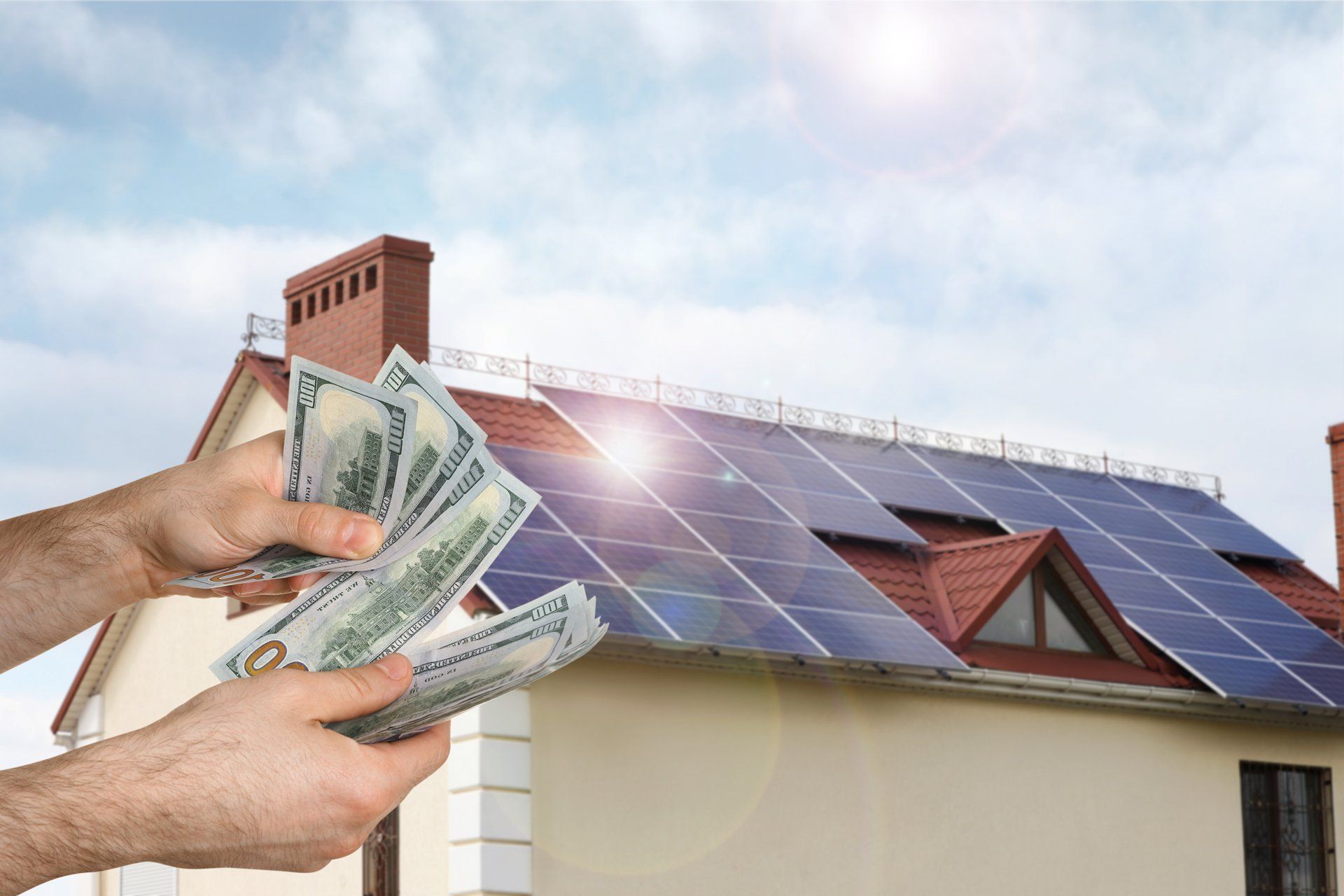
By Adam Petersen
•
03 Jan, 2022
Solar panels aren’t just good for the environment — they’re good for your wallet. Solar panels really will save you money in the long run, but everyone’s solar journey is unique and leads to different savings. Factors to consider when determining your savings include the amount of electricity you use, the size of your solar system, and the solar financing option you choose. Some savings, like a lower electric bill, will happen right away. Others take patience but are well worth the payoff. OFF SET YOUR ELECTRIC BILL If you want to know how much money you’ll save on your electric bill with solar, you first have to know how much electricity you use. Start by looking at your monthly electric bills. The amount of electricity used is listed in kilowatt-hours, or kWh. From here, you can do some math to figure out how much kWh you use in a year or on average per month. Using that information, online solar calculators can help you figure out how much kWh your solar system would have to run your home entirely on electricity produced by solar energy. Google’s Project Sunroof is another useful tool. With Project Sunroof, you can enter your address and your monthly electric bill to receive an estimate of electric bill savings over time. Now you need to know if your solar panel system can accomplish what you need. The amount of solar energy you’ll receive depends on how much sunlight you get, how many solar panels you have, and the kW size of your system. To get an idea of how much solar potential you’ll have, you can find your Sun Number score. If you have extra solar energy, it can be sold back to your power company through net metering. However, there is some bad news — Indiana is phasing out net metering over the span of several years. If you install solar after June 30, 2022, you’ll see less profit for your solar energy. Owing nothing at all on your electric bill isn’t a likely scenario, but the more energy you’re able to use from the sun, the lower your bill will be! CHOOSE A SOLAR FINANCING OPTION Solar panels are an investment. The cost to install solar panels depends on the size of the system, but before tax credits are applied, the average cost to install solar panels in Indiana is $16,000 to $33,000. The best solar financing option comes down to what is most realistic and doable for you, but buying a solar system outright or taking out a solar loan is typically going to lead to the biggest savings. Paying for your solar system all at once would amplify your savings in the long run, but it is a lot of money at once because it’s like paying for 25 years of electricity in advance. By paying upfront, you avoid paying interest on a loan and are eligible for tax credits and other incentives since you own the system. Solar loans are another good option when looking for maximum savings. With a solar loan, you borrow money to purchase and install the solar panels then pay it back over time with interest. With this option, you own your system outright, so you are eligible for tax credits. Another cost effective benefit of solar loans are that they can be rolled into other home improvement projects that require financing, such as installing a new roof. Monthly solar loan payments are often less than a typical energy bill, according to the U.S. Solar Energy Technologies Office , which means you start saving immediately. With a solar loan, you can save between 40-70% of your electricity bill over your solar panel’s lifetime, which is about 25 years. With solar leases and solar power purchase agreements (PPAs), that percentage is smaller, but you’ll still save an estimated 10-30% of your electricity bill. With a lease or solar PPA, you don’t own your solar panel system. TAKE ADVANTAGE OF TAX CREDITS The federal solar investment tax credit allows you to claim a credit on your federal income taxes for a percentage of the money you spent to install and use solar energy in that calendar year. The ITC was renewed by Congress in December 2020 and extended the credit to 26% of eligible costs through 2022 and 22% through 2023. That means if your system costs you $20,000 in 2022, you would receive a $5,200 credit on your taxes. Unused credits for solar panel systems will roll over to the next tax year if you don’t owe taxes in the calendar year you install it — as long as you’re still the owner of the system. Before claiming the federal solar tax credit, talk with an accountant or tax expert to make sure you’re eligible. RE-AMORTIZE YOUR SOLAR LOAN To utilize your tax credit money, consider re-amortizing your solar loan. If you use those savings to pay a lump sum toward your principal balance, your monthly payments will be lower going forward, which will help you pay off the loan quicker. Before you re-amortize your solar loan, find out if you only have the chance to re-amortize within a specific time frame and if there is a fee to do so. Talk with your financial advisor or a tax expert to find out what’s most beneficial for you. READY TO SAVE? If you’re considering getting a solar panel system installed, now is a great time. According to the Solar Energy Industries Association , the cost to install a solar system has declined more than 70% over the last decade. We can help you start saving. At Sun Warrior Solar, we offer free consultations and can provide you with a free energy report and solar quote. Fill out the contact form on our website so we can help you get started on your solar power journey.
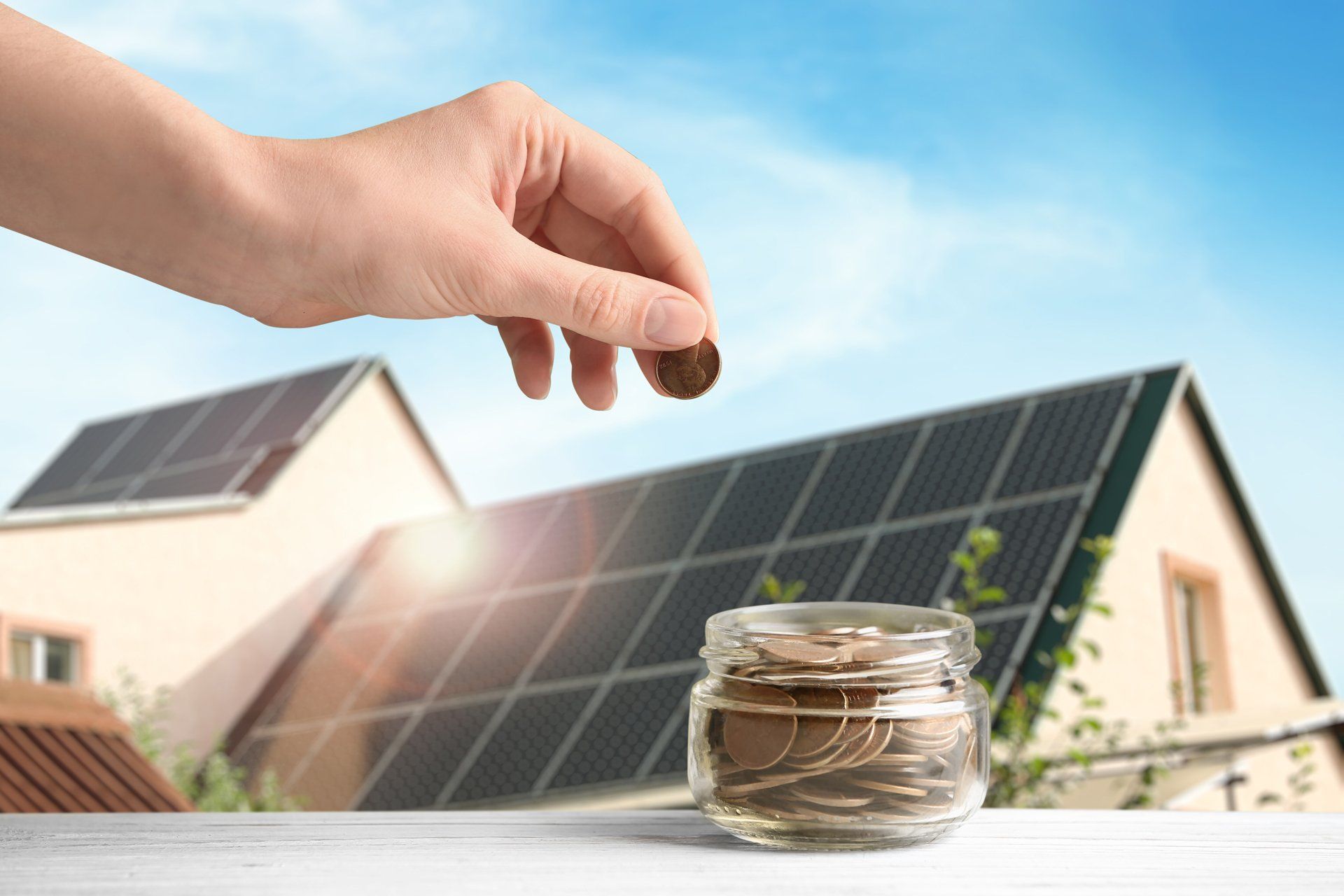
By Adam Petersen
•
22 Dec, 2021
Having a solar system installed is energy efficient and reduces your energy bills. It’s an accomplishment on its own, but why stop there? There are additional steps to take to lower your energy bill and maximize your tax credits . The cost of labor and installation for your new solar panel qualifies you for federal tax credits , and home improvement projects, solar equipment, and your mortgage can be lumped into your solar financing. While add-ons and home improvement projects do take planning, time, and money, it will pay off in the end – literally – when you receive tax benefits and see your current electric bill decrease. SOLAR AND HOME IMPROVEMENT Many solar loans can be lumped in with a home improvement loan from a bank. With a home improvement loan, you can make home upgrades . Think about energy-efficient air conditioning, tankless water heaters, and insulation improvements that can also help reduce your energy bills. Some home improvement projects, like a new roof, can also help your solar system’s efficiency. Consult a contractor to look at your roof and give you feedback on the best roof size and shape and how much of your roof surface can be equipped with solar panels. SOLAR AND YOUR MORTGAGE Your solar financing can be rolled into your mortgage payments through Energy Efficient Mortgage (EEM) programs. Programs like the Federal Housing Administration's EEM program encourage homebuyers to make their homes more environmentally friendly while allowing you to finance a solar system as part of your mortgage loan. Interest on mortgage payments is tax-deductible, while interest on unsecured solar loans is not. With an EEM, as the homeowner, you’d have to get a home energy assessment. This provides you with personalized recommendations of energy-saving improvements, the estimated cost of the improvements, and the estimated amount of money the improvements would save you in energy costs. Aside from solar, recommended upgrades could be things like furnace duct repairs, adding more insulation in your home, and installing double-pane windows. If you’re already a homeowner and want to make the move to solar or install other energy efficient upgrades, EEMs allow you to refinance your home loan to pay for the upgrades. While you’d see your mortgage go up, you’d only be dealing with one loan payment. The EEM program ensures the energy efficient improvements are cost effective, so as your mortgage goes up, your energy bills go down. You may even see enough savings on your energy bills that your total monthly bill expenses will be about the same, if not lower overall. SOLAR EQUIPMENT AND TAX INCENTIVES With a solar system comes the cost of solar equipment and installation, but those expenses qualify under the federal solar investment tax credit (ITC) . The ITC incentivizes homeowners to invest in renewable energy for their homes. With the solar ITC, you can claim a credit on your federal income taxes for a percentage of the money you spent to install and use solar energy in the calendar year. The ITC was renewed by Congress in December 2020 and extended the credit to 26% of eligible costs through 2022 and 22% through 2023. When receiving the ITC, only necessary items directly related to your solar panels may be claimed . According to the United States Department of Energy, qualified expenses include: Cost of solar panels Labor costs including installation, permitting fees, inspections costs, and developer fees Solar equipment like wiring and mounting equipment Energy storage devices, like batteries, charged only by your solar panels Sales taxes on eligible fees This means that with the solar ITC, home improvement projects, even if related to the solar system (like the cost of an entirely new roof) are likely not going to qualify. Before claiming the federal solar tax credit, it’s a good idea to get advice from a tax professional or accountant to make sure you’re eligible and to ask any questions you may have. If you’re eligible, visit the Internal Revenue Service website for more information. GO SOLAR WITH SUN WARRIOR SOLAR There are many ways to make your home more energy efficient while simultaneously reaping the financial benefits. We’re here to help you get started on your solar journey. Contact our team at Sun Warrior Solar for a free energy audit and to learn more information about the advantages of solar energy.
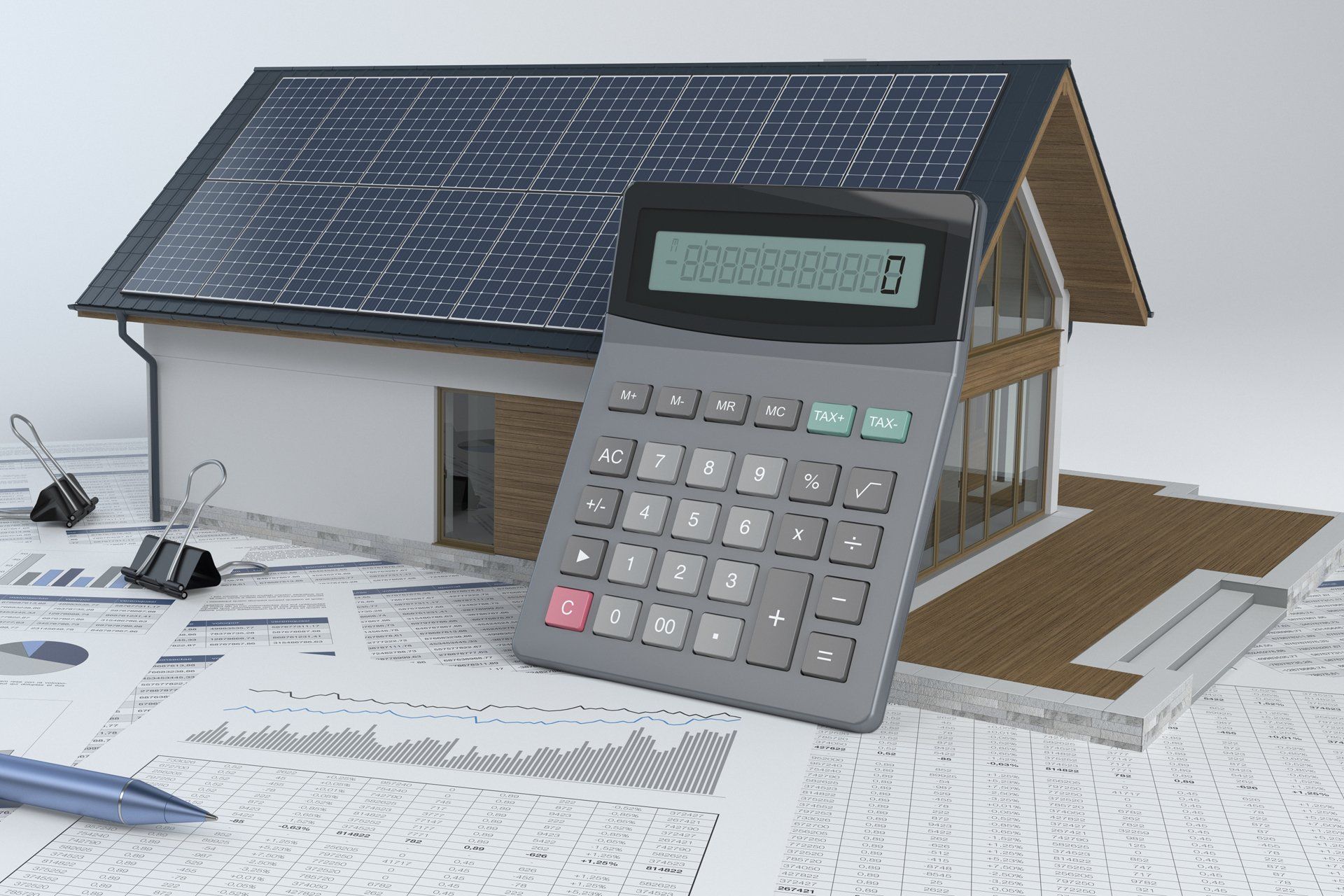
By Adam Petersen
•
10 Dec, 2021
Solar systems are energy efficient and can help offset your electric bill in the long run, but buying a solar system outright isn’t always the most realistic option. Before tax credits are applied, the average cost to install solar panels in Indiana ranges from $16,000 to $33,000 depending on the size of the system. One solar financing option you have is to take out a solar loan, which can save you up to 70% of the cost of a solar panel over the lifespan of your solar unit, according to the United States Department of Energy . HOW IT WORKS Solar loans are similar to other loans — you borrow money from a lender to purchase and install the solar panels, then pay it back over time with interest. The payment structure is also similar to other loans. The interest rate impacts the total cost of the loan over its lifespan. Shorter loan terms have higher monthly payments but a lower cost overall compared to longer loan terms that have lower monthly payments. TYPES OF SOLAR LOANS Many banks and credit unions offer solar loans. They can be wrapped into other home improvement projects that require financing, like installing a new roof. Solar loans are usually either secured or unsecured. Secured solar loans are backed by an asset, such as your home. Unsecured solar loans don’t require collateral, so they tend to have higher interest rates since they’re riskier for lenders. FINANCIAL BENEFITS According to the U.S. Solar Energy Technologies Office, monthly solar loan payments are often less than a typical energy bill. While in some ways solar loans are similar to other loans, they also have their own unique features. Solar loans differ from other solar financing options like solar leases and power purchase agreements (PPAs) because with a solar loan, you own your new system outright. That means you’re eligible to claim the tax rebates, solar incentives, and tax credits associated with installing a solar system. Plus, no matter how you finance them, solar panel systems also increase property value. Homes with solar panels sell for 4.1% more on average than comparable homes without solar, according to a study by Zillow . IS SOLAR POWER RIGHT FOR YOU? Our expert staff at Sun Warrior Solar is ready to answer all of your solar-panel-related questions. To get a free quote, or to schedule a free energy report, send us a message through our website .

By Adam Petersen
•
22 Nov, 2021
Solar power is free energy provided by the sun, and it’s relatively easy to collect. It’s an endless, clean source of energy that’s available for everyone. In fact, the sun provides enough solar energy to Earth in 1 hour that the whole world could be powered for the entire year ! That’s a lot of power. But that’s solar power on a massive scale. What about just trying to power your own home for a year? Let’s look at how your home can harness the power of the sun and how you can use it effectively to reduce your reliance on utility companies and fossil fuels. HOW DO YOU COLLECT SOLAR POWER? Solar energy is beamed down to the Earth through sunshine. Rays of sunshine contain photons, which can be converted into electrical energy. A solar panel is designed with many solar cells which absorb the photons and turn them into electrical energy. Any excess energy is dissipated as heat, so there are no harmful emissions associated with the collection of solar energy. The process of converting photons to electricity is a chemical. Because there are no moving parts inside of a solar panel, little to no maintenance is required. The amount of usable sunlight in your area determines the solar potential of your home . To help you figure out how much solar energy you could be collecting , some companies have developed handy digital tools. The power demands of each home are different, and different types of panels are able to create varying amounts of energy. It can take between 28 and 34 solar panels to completely power a home off-grid. HOW DOES SOLAR POWER WORK IN MY HOME? If you’re like most homeowners, your solar panel system is tied to the power grid. That means that when your panels aren’t producing electricity, you’re receiving power for the utility company. While your solar panels are converting solar power to electricity, they will inevitably create an excess. The excess energy is back fed through the power lines to the utility company. The power company will purchase this energy back from homeowners in a process known as net metering . If you install a battery back-up bank then you can also store that extra energy to use later. Because energy is back fed through the power lines, your solar panel system will not create electricity if there’s a power outage. If it were to create power and send it through the lines, it could harm or kill utility workers making repairs. A battery bank can be useful if you have a grid-tied system and your power goes out. While you won’t be able to run your entire home, you’ll be able to run essential systems like your refrigerator and HVAC system. HOW CAN I USE SOLAR TO SAVE MONEY? While it’s difficult in Indiana to reach 100% energy independence using solar panels, you can get close. Solar panels can help you reduce your energy consumption from the utility company during the day, and you’re also able to sell a percentage back through net metering. The savvy solar panel user, though, will use a battery back-up system to their advantage. By storing excess energy created through the day — when the sun is producing the most power and you’re consuming the least — you can save it for when you really need it. Many power companies raise their electricity rates during peak hours of the day — usually in the evening when people are home from work and using power. A battery bank will allow you to use the excess power you created throughout the day to avoid having to rely solely on the utility company during peak hours. That means you can save an extra few dollars every month, which can really add up! If you’re ready to start saving with solar, our team at Sun Warrior Solar is ready to help! We’re ready to meet with you to discuss your solar energy needs and find the right size system for you and your home. Contact us today to speak with one of our knowledgeable staff members for more information, or to schedule an estimate.

By Adam Petersen
•
08 Nov, 2021
Whether it’s a storm, a car accident, high winds, or a rolling blackout, power outages are bound to happen. If you’re considering investing in a solar power system for your home, you’re probably wondering if you can become immune to the annoyances of outages. There are a few factors that will determine whether or not you’ll be the only home in the neighborhood with their lights on (and with no noisy generator running!). OFF-GRID VS GRID-TIED The major thing that will decide whether or not you lose power like everyone else is if you’re tied to the power grid. Grid-Tied By law, solar power systems that are tied to the grid must stop producing power when there’s an outage. The sun may still be out, and you may — theoretically — be able to produce power, but your system won’t. The reason is because of worker safety. If your system was continuing to produce electricity while tied to the grid it would back feed the energy into the power lines. That means that any utility workers working on the lines for the outage would be working with live wires. That could be dangerous and potentially fatal. The majority of homes with solar panels are grid-tied. That’s because it allows you to still use energy from the power company when your solar panels aren’t operating. Since most homes in the United States will have trouble reaching 100 percent energy independence, it’s almost a must to be grid-tied. Off-Grid An off-grid system is one that’s not tied to any utility grid. It offers you the advantage of being able to use your solar energy constantly and removes your reliance on existing power systems. But if your solar energy runs out, you can’t draw from the larger grid for power. If your solar panel system is off-grid, then you can continue to use the energy created by your solar panels if the power were to go out. In fact, unless the sun wasn't out to generate energy , you’d likely never even know others were experiencing an outage. BATTERY BACK-UP If you have a solar panel system that’s grid-tied, that doesn’t mean you 100 percent won’t have access to power if there’s an outage. If you install a battery bank as a back-up , you can store excess energy your panels create in order to have electricity during an outage. You won’t be able to run all of your electricity with a battery back-up, but you can keep essential systems running. In Indiana, where net metering is limited , having a solar power battery back-up can make a lot of sense. Since solar power generated can only be sold back to the utility companies for a fraction of their value, storing excess energy for emergencies like power outages makes sense. If you have an off-grid system you’ll likely want to consider battery back-ups, too, so that you have access to electricity when the sun goes down. GENERATORS Generators are also an option to ensure you have power during an outage. Solar power generators exist and can be useful if your electricity doesn’t go out during the night. However, a nonportable system attached to your home through the grid will face the same limitations as the system on your roof and cannot be used if there’s an outage. A portable generator that’s not attached to the grid can be useful to create clean energy during an emergency, though. Power outages can happen at any time, day or night, rain or shine. It’s best to always be prepared to have the electricity you need to keep your emergency systems operating. We can help if you’re ready to install solar panels and a battery back-up in your home to become more energy independent and to have peace of mind during an outage. Our solar panel experts at Sun Warrior Solar can help you figure out how many solar panels you’ll need to reduce your reliance on the power company. Contact us today to learn more about solar power for your home.
Sun Warrior Solar
6926 Trafalgar St Fort Wayne, Indiana, 46803 | (260) 222-8220
FINANCING AVAILABLE
Content, including images, displayed on this website is protected by copyright laws. Downloading, republication, retransmission or reproduction of content on this website is strictly prohibited. Terms of Use
| Privacy Policy
